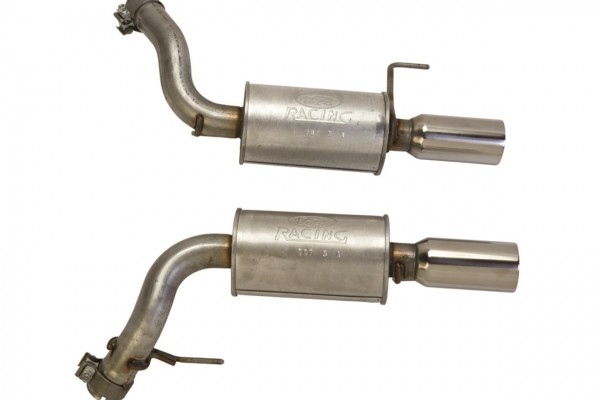There’s a common checklist of parts and upgrades that every late model Mustang enthusiast wants to get for their car, and right at the top is almost always a good set of mufflers. That’s not to say that Mustangs don’t sound good from the factory. Quite the contrary, they always get positive reviews from the automotive press, and we happen to know for a fact that the Mustang team puts a great deal of time into making sure they always ‘sound like a Mustang should.’
Still, they do have to market them to the general public, which means they tend to opt for a much more hushed tone than most hot rodders and racers enjoy. That’s ok with us, though; it just makes sure our cars stand out and get noticed! To support that desire, the aftermarket always quickly steps up to offer a full complement of upgrade options with many companies offering multiple choices. It’s honestly hard to know where to start sometimes.
What it all really comes down to is sound preference. Unlike the old days, the stock mufflers on Mustangs are quite good from a power production standpoint, so just a few extra horsepower are to be expected from cars with mostly bolt-ons parts. Extremely powerful forced induction combos might see a bit more, though. Still, having a car that sounds like we imagine it should adds a lot to the driving experience.
In a daily driven Mustang, in which you spend a great deal of time doing mundane commuting, you have to walk the line between aggressive, enjoyable sound and something that’s only tolerable for short periods of time. If you’re not careful, you could end up with a package that distracts from the driving experience rather than enhances it. Our biggest rule of thumb is to look for mufflers with a low cruising tone and little to no cruising speed drone. There’s really nothing that can ruin a nice long drive like an exhaust tone that’s reverberating and overbearing.
There are several great options in the Summit Racing catalog that fit this bill, but one of the best is one of the most unexpected: Ford Racing’s FR500 mufflers. You would think that a part designed and engineered for Ford Racing’s turnkey FR500 racecars would be far too aggressive for daily street driving, but the opposite is true. It’s one of the most livable muffler options out there. The exhaust tone is nearly exactly the same as stock on 3V 4.6 powered GT’s, just a bit louder under acceleration. At idle it’s just a bit deeper, and there is absolutely zero drone at light throttle and highways speeds. It really is the best of both worlds.
We recently installed Ford Racing FR500 mufflers on a 2005 Mustang GT. See how the process went by scrolling through the slideshow above. Below, you can listen to our Mustang before and after the installation.

















What is the diameter and length of the barell section of this muffler? What is the distance from the back of the barrel to the end of the exhaust tip? Thank you for your time – John
[…] Download Image More @ http://www.onallcylinders.com […]
[…] Download Image More @ http://www.onallcylinders.com […]